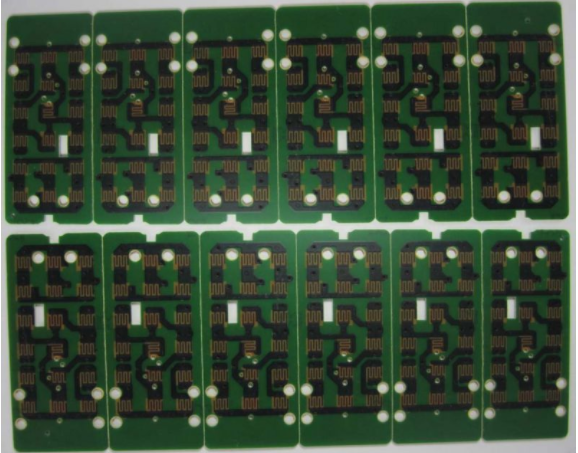PCB factory: What is PCB halogen-free substrate?
What is a halogen-free substrate?
According to the JPCA-ES-01-2003 standard: Copper clad laminates with chlorine (C1) and bromine (Br) content less than 0.09% Wt (weight ratio) are defined as halogen-free copper clad laminates. (At the same time, the total amount of CI+Br≤0.15%[1500PPM])
Why ban halogen?
Halogen refers to the halogen elements in the periodic table of chemical elements, including fluorine (F), chlorine (CL), bromine (Br), and iodine (1). At present, flame retardant substrates, FR4, CEM-3, etc., flame retardants are mostly brominated epoxy resin. Among the brominated epoxy resins, tetrabromobisphenol A, polymeric polybrominated biphenyls, polymeric polybrominated diphenyl ethers, and polybrominated diphenyl ethers are the main fuel barriers for copper clad laminates. They have low cost and are compatible with epoxy resins. However, studies by related institutions have shown that halogen-containing flame-retardant materials (Polybrominated Biphenyls PBB: Polybrominated Diphenyl Ethyl Ether PBDE) will emit dioxin (dioxin TCDD), benzofuran (Benzfuran), etc. when they are discarded and burned. Large amount of smoke, unpleasant smell, highly toxic gas, carcinogenic, can not be discharged after ingestion, not environmentally friendly, and affect human health. Therefore, the European Union initiated the prohibition of using PBB and PBDE as flame retardants in electronic information products. The Ministry of Information Industry of China also requires that as of July 1, 2006, electronic information products put on the market must not contain substances such as lead, mercury, hexavalent chromium, polybrominated biphenyls or polybrominated diphenyl ethers.

EU law prohibits the use of six substances including PBB and PBDE. It is understood that PBB and PBDE are basically no longer used in the copper clad laminate industry, and bromine flame-retardant materials other than PBB and PBDE, such as tetrabromide, are mostly used. The chemical formula of bisphenol A, dibromophenol, etc. is CISHIZOBr4. This type of copper clad laminate containing bromine as a flame retardant is not regulated by any laws and regulations, but this type of bromine-containing copper clad laminate will release a large amount of toxic gas (brominated type) and emit a large amount of smoke during combustion or electrical fire. ; When the PCB is leveled with hot air and components are welded, the plate is affected by high temperature (>200), and a small amount of hydrogen bromide will be released; whether dioxins will also be produced is still under evaluation. Therefore, FR4 sheets containing tetrabromobisphenol A flame retardant are not currently prohibited by law and can still be used, but they cannot be called halogen-free sheets.
Principle of halogen-free substrate
For now, most of the halogen-free materials are mainly phosphorus-based and phosphorus-nitrogen-based. When phosphorous resin is burned, it is decomposed by heat to generate meta-polyphosphoric acid, which has strong dehydration property, so that a carbonized film is formed on the surface of the polymer resin, which insulates the burning surface of the resin from contact with air, extinguishes the fire, and achieves a flame-retardant effect. The polymer resin containing phosphorus and nitrogen compounds generates incombustible gas when burned, which helps the resin system to be flame-retardant.
Features of halogen-free sheet
1. Material insulation
Due to the use of P or N to replace the halogen atoms, the polarity of the molecular bond segment of the epoxy resin is reduced to a certain extent, thereby improving the qualitative insulation resistance and resistance to breakdown.
2. Water absorption of the material
The halogen-free sheet material has fewer electrons than halogens in the nitrogen-phosphorus-based oxygen reduction resin. The probability of forming hydrogen bonds with hydrogen atoms in water is lower than that of halogen materials, so the water absorption of the material is lower than Conventional halogen-based flame retardant materials. For the board, low water absorption has a certain impact on improving the reliability and stability of the material.
3. Thermal stability of the material
The content of nitrogen and phosphorus in the halogen-free sheet material is greater than the halogen content of ordinary halogen-based materials, so its monomer molecular weight and Tg value have increased. When heated, its molecular mobility will be lower than that of conventional epoxy resins, so the coefficient of thermal expansion of halogen-free materials is relatively small.